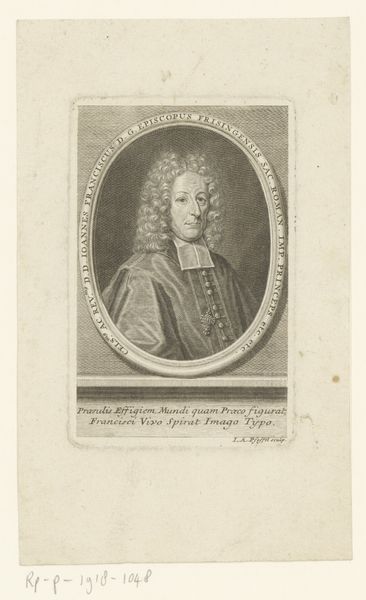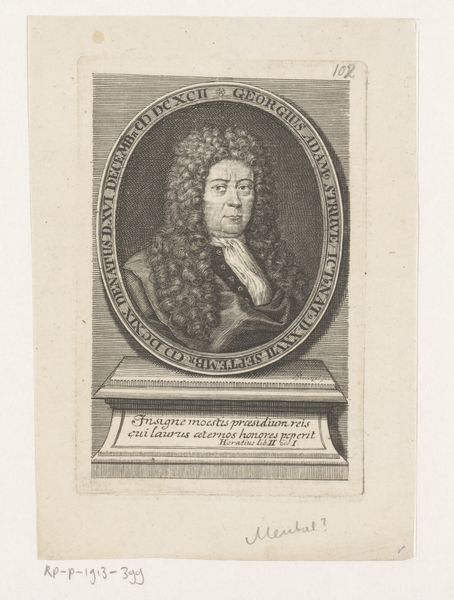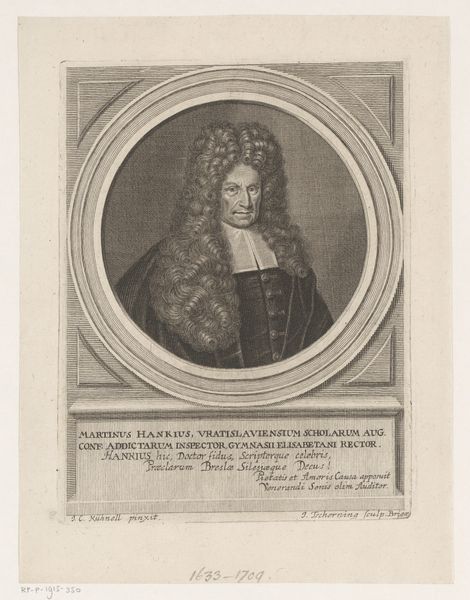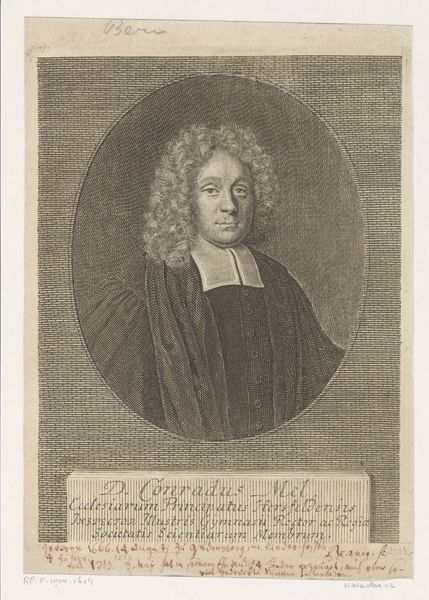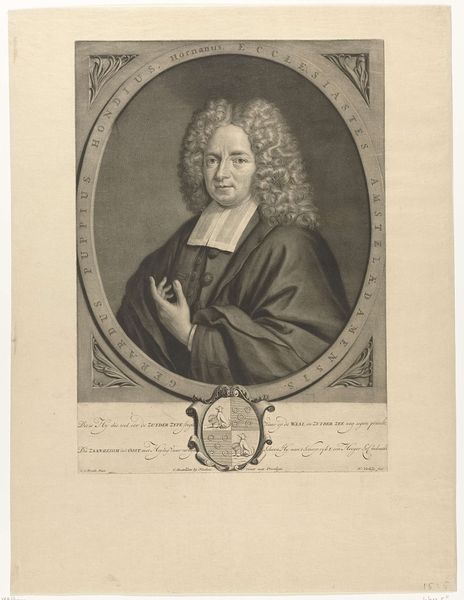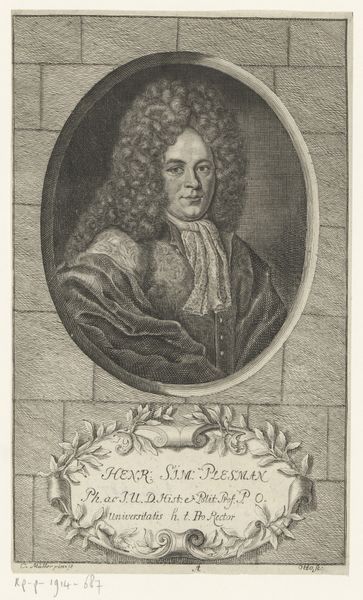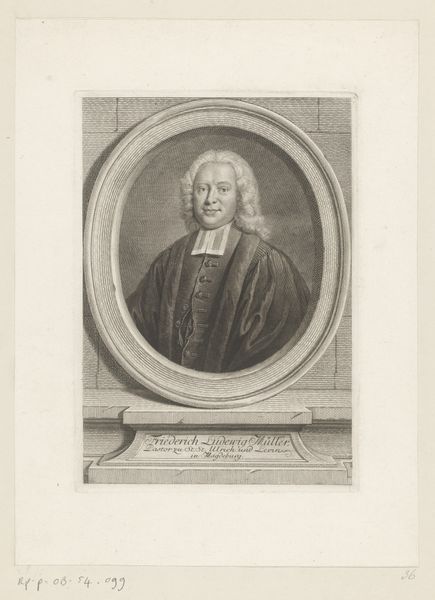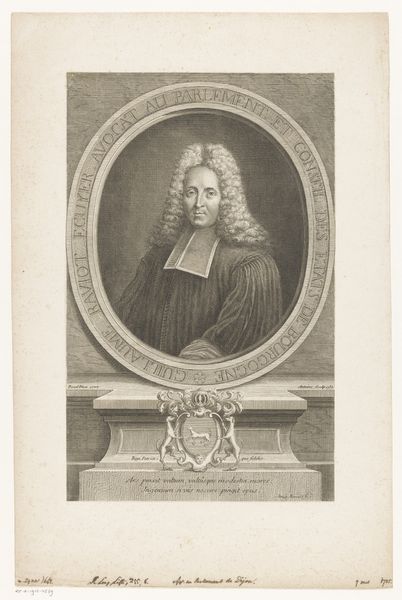
engraving
#
portrait
#
aged paper
#
toned paper
#
baroque
#
old engraving style
#
history-painting
#
engraving
Dimensions: height 150 mm, width 99 mm
Copyright: Rijks Museum: Open Domain
Curator: Welcome. Let’s take a moment to consider this intriguing portrait. It depicts Johann Christoph Pfaff, dating from sometime between 1687 and 1743, rendered in engraving. Editor: You know, immediately, I'm drawn to the almost comical abundance of hair. It's as though his wig has a gravitational field all its own, threatening to consume the poor fellow. Curator: Well, such hairstyles were fashionable and indeed signaled status at the time. These elaborate wigs served a specific purpose in baroque society. More important than that, look at the way Mentzel uses engraving to carefully depict this intellectual figure within a formal portrait. The inscription below suggests his profession: theologian and professor. Editor: Absolutely! But for me, it’s all about texture, all that intense line work trying to catch that weight of the wig, or the formality of his clerical robe. Do you think he ever looked in the mirror and thought, "less is more"? Or did image dictate everything back then? I wonder… Curator: Image was paramount. Portraits, especially engraved ones like this, disseminated power and solidified reputation. The choice of engraving ensured its reproducibility. Pfaff's ideas would have been amplified and shared with fellow academics via this method. Editor: And maybe he saw this portrait and thought, "Finally, my hair gets the recognition it deserves!" Do you ever consider what they would really think about seeing themselves immortalized in museums centuries later? Curator: The portrait itself provides clues! He likely envisioned himself as a figure worthy of historical record. That's part of what artworks did—and continue to do—as public assertions of personal and political legitimacy. Editor: Right. Perhaps it's less about accuracy and more about constructing legacy. What is amazing about images such as these is what is going through his mind and the story it creates for the viewer to build off. Curator: Precisely! That's the enduring power of these kinds of portraits, isn't it? Editor: Definitely gives you a whole different appreciation, doesn’t it?
Comments
No comments
Be the first to comment and join the conversation on the ultimate creative platform.
